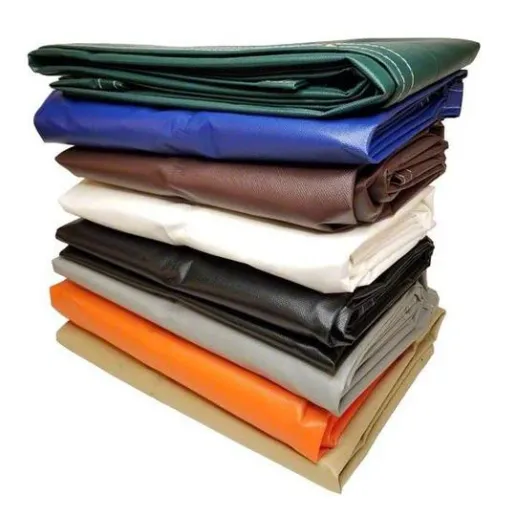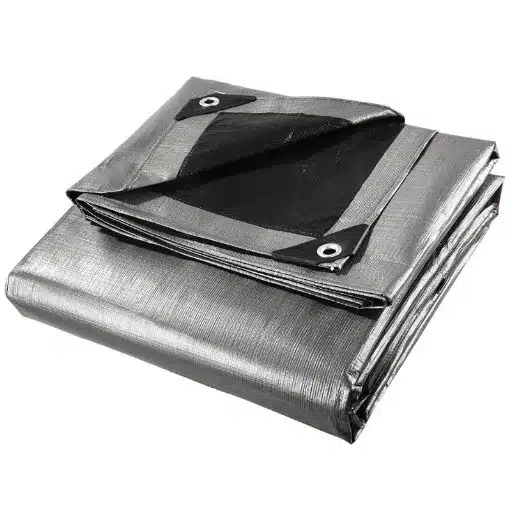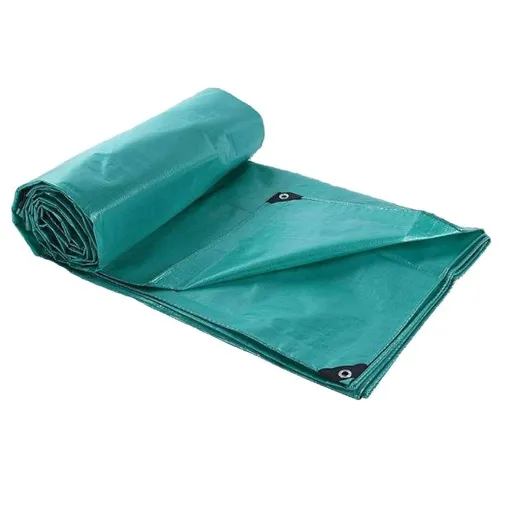Having a strong understanding of materials and the particular purposes they serve is paramount when choosing the best tarp. Tarpaulins, or tarps as they are commonly known, are incredibly versatile and long-lasting materials as they can be applied across a wide range of functions, from outdoor events to construction sites. The different types of tarpaulin material, whether it is polyethylene, canvas, or vinyl, have their own advantages and are best suited for specific purposes. I will be explaining the different tarpaulin materials, including their unique features and durability levels and the most suitable applications, in this article to help you make a more informed choice. It is essential to know the difference between these materials if you would want to save time, money, and effort, as it will be easier for you to know what kind of material it suits you best. Keep reading to see the various choices that you have and to figure out what the best option is for you.
Introduction to Tarpaulin
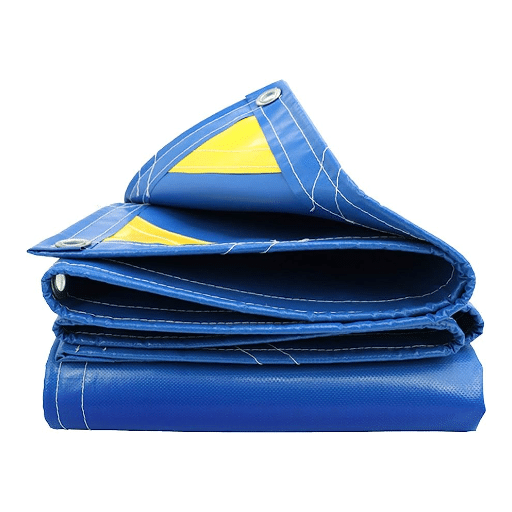
What is Tarpaulin
The term tarpaulin (or tarp for short) refers to a robust shield that is amorphous in shape and is utilized for protection against natural elements, remarkably to shield something from snow, the rain, the sun, or the wind, as well as any other form of destructive force. While the materials tarpaulins are made up of are mainly either of strong and very tough nature, they features are its main attraction and bad do the materials it is made of including polyethylene and the better-canvas fabric as well as hardwearing fabric along the grommet edges that ensures you can fasten or tie it very securely. Tarps are also used widely as a means of protecting equipment and machinery on sites of construction.
The Relevance of Getting the Right Tarp
Employing the proper tarpaulin is vital if you want it to perform at its best and last long. The weight, material, and thickness have to harmonize with the intended use of the shield. An example is that the main purpose of a thin tarpaulin that is constructed from a polyethylene polymer is to shield construction machinery and serve as a roof because of its water and damage resistant qualities. In opposition to the latter, the light fabric of an art or canvas tarp is for protection in the art field and agriculture. According to recent data from online searches, “UV-protective” is a heavily searched term because people are interested in increasing the lifespan of items covered by tarp. New trends are greatly affecting the demand for this innovative product. The requirement for particular properties is increasing day-by-day. This is because people are interested in gathering more information for UV-protective and UV-resistant tarp for outdoor use. They are also in demand because of the need to shield more outdoor items from the sun. In addition to the above, other features like reinforced edges and grommets are being sought after because they enhance dependability. Individuals can enjoy the benefits of a tarp that is effective, low-cost, and maintains quality. Partnering cost-effectiveness and a quality product also will it to offer value.
The Various, Common Tarpaulin Classes
When conducting a review of the search data generated by the search engine of ‘, it is clear that there is a great demand AI is particularly focusing on the emergence of the tarpaulin in special areas of demand to meet particular needs.
Polyethylene (PE) Tarpaulins
PE tarps are one of the most popular tarps because they are lightweight and still strong indeed. You can use these tarps to create temporary covers because they are U.V and water resistant. They are also ideal for outdoor applications that serve as protection, such as coverings for vehicles and boats and for construction material.
Vinyl Tarpaulins
Found with impeccable strength and tear resistance, vinyl tarps are a go-to for users who are interested in tough projects that require more strength. Vinyl tarps are also waterproof and are well known as U.V and flame resistant to survive the tough conditions one can imagine such as extreme heat and extreme cold.
Canvas Tarpaulins
For agriculture and truck covers, canvas tarps are a great fit especially when there is need for a natural product and material. The products are breathable hence they have no complete protection of waterproofing, but they are strong and highly suitable.
Mesh Tarpaulins
Mesh tarpaulins receive a lot of inquiries for users who need solutions to shade. These tarpaulins are popular and are ideal for canopies, privacy screens, and even for covering scaffolds because they allow free airflow and also block out too much unwanted sunlight.
A blend of the new search features and the particular PV are key things to note for users looking for a long-term solution to protect their items with COVID-19 is cost with protection. There is easy-made equipment on U.V and tarp.
Types of Tarpaulin Materials

PVC Tarpaulin
PVC tarpaulin is famously known for its resilience and flexibility and for the consumers who have always considered it the ideal choice, the tarpaulin is amongst the first in recent search trends. It comes as no surprise that one of the questions that is frequently asked revolves around its usefulness. “What makes PVC tarpaulin a dependable material for outdoor use?” PVC tarpaulin can serve for various applications, and it is ideal for construction sites. This is directly a result of the tarpaulin being waterproof, UV-resistant, and resistant to various other weather conditions. The use of the tarpaulin is easily secured, and its great pliability allows it to do a great many services in different realms as well as make it cost efficient in the long run. The above understanding is crucial in realizing that PVC is frequently the most useful option for both outdoor and industrial projects.
Canvas Tarpaulin
Unlike synthetic tarps made from polyester or PVC fabric materials, woven cotton or polyester is used to make canvas tarpaulins. The fact that these tarps are not only eco-friendly but also 100% biodegradable is the reason tarps are becoming increasingly popular. Woven cotton or polyester tarps have a unique ability to reduce condensation with the airflow that they permit because of their porosity. Their lijgner “can be used to farm” makes canvas tarps not the heavy synthetic tarps for specific use cases the true tarp. People are aware that canvas tarpaulin may have a shorter lifespan and may not protect from weather like PVC. However, they keep their demand alive because they still serve certain industries and uses very effectively.
PE Tarpaulin
PE tarps are excellent for protection and covering, and are well known for their excellent and very much elegant water resistance. As a matter of fact, it is noted that PE tarpaulin is very easy to handle, quite cheap and also lightweight, thus making it suitable even for commercial utilization. In fact, the tarp is generally impermeable to water, and the term “tarp” is generally used to refer to the waterproof tarp made from woven polyethylene and coated with a waterproof layer.
Using the search engine of the well-known data provider, it can be deduced that there is a great demand for PE tarpaulins. PE tarpaulins are very popular because of their resistance to very harsh climatic conditions together with their availability and low price. PE tarps are highly suitable for establishment using temporary shelters, agricultural firms for storage of goods, coverings for trucks, and even events where the coverings are needed. Their special features also include the tolerance to sunlight and low maintenance, which enable long outdoor stay without instant breakdown. They are also environment friendly as they can be recycled, and this, together with their adaptability, durability, and cost cutting, means they are a choice solution for endless applications concerning any industry.
Comparative Analysis of Different Tarpaulin Types
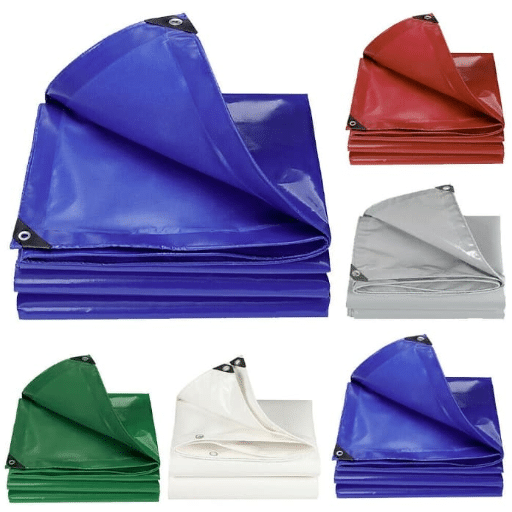
Durability and Performance
Tarpaulins are crucial in various settings; for example, they are used in moving heavy goods in the transport industry. Different types of tarpaulins are employed in different conditions, and the suitability of a given tarpaulin depends on the conditions in question. For example, Polyethylene (PE)Type DuPont manufactured tarpaulin provides protection to goods using its weather resistant and light protection properties. This is why, in the weather-resistant and heavy-duty situation sector, tarpaulins of this construction are the best option. In other matters, woven PVC provides protection to goods using waterproof shaded eye design, which is the most favorable option in the sunshine sector.
It is well documented that PE tarpaulin is to be the most preferred material in the tunnel agriculture where the requirement of a tarpaulin is crucial. Simultaneously, advanced-looking features are the ones that make PVC the most sought tarpaulin in mountainous regions. Customers acquire a tarpaulin to buy and forget it as they are worried about keeping it in good condition and with PE tarpaulin this is solved. For the PVC ones, manufacturers’ longer guarantee worries reduce the payload.
Application Suitability
Application-oriented use of PE and PVC is increasingly relevant in modern times. The use of PE and PVC is currently very dynamic in the modern world, with each sector increasingly specializing in the use of one type or the other. Customers are increasingly searching for PE tarpaulins for household and garden activities, as well as for instance temporary furniture, as their use is lightweight and environment friendly. On the other hand, the use of PVC is mainly searched for in industries in need of serious solutions, for example in construction, logistics, and agriculture. In comparison, searches for PE are practically at a standstill compared to PVC, which is in demand; the previous ones also tend to be more durable and provide a good solution, in the form of a tarp. The former are more likely to address everyday tarpaulin needs especially because of the lightweight and eco-friendly aspect, whereas the latter addresses the needs of users in industries in need of slip resistant flooring and to cater to the Logistics market as well.
Cost Considerations
Cost Analysis: The perceived cost benefit of PE and PVC tarpaulins calls for careful evaluation so as to identify the actual benefits. In many instances, PE tarpaulins are the most affordable option for a significant portion of consumers, and for these consumers, their lightweight and stand-by application solutions work well and therefore are recommended in everyday use setups. There are, however, some exceptions; for instance, those in logistics and construction require water-resistant and heavy-duty tarpaulins, for which PVC tarpaulins have a higher demand due to their resistance to the sun decay, peak, and especially to water in increasingly extreme percentages because the sun is becoming harsher.
In the data analysis, one comment that is overtop is the need for water resistance; it would be for the high-end low demand PVC uses, such as use by the farmers surrounding the lakes, whereas the real construction sectors need water resistant, which is in conjunction with the data showing the abovewater risk and water requests.
A series of recent searches conducted in the ‘s search engine show that consumers seem to prefer PE tarpaulins in contrast to “cheap tarpaulins” and, consequently, the PE products have a stronger association with low cost. It is evident that the PE tarpaulin sector is dedicated to satisfying two basic needs of consumers: the use of the product and the cost of acquisition. As with PVC tarpaulins, the main use for “expensive and long—lasting tarpaulins” is still in rare use. The tarpaulin very rarely appears for specific use such as addressing “lightweight” issues. The use for consumer appeal is dedicated to the petrochemical industry. The data is confirming that the cost of PVC tarps is certainly justified, as with the ease of PE tarps, as they are being priced at a much higher rate.
Choosing the Right Tarpaulin for Your Needs
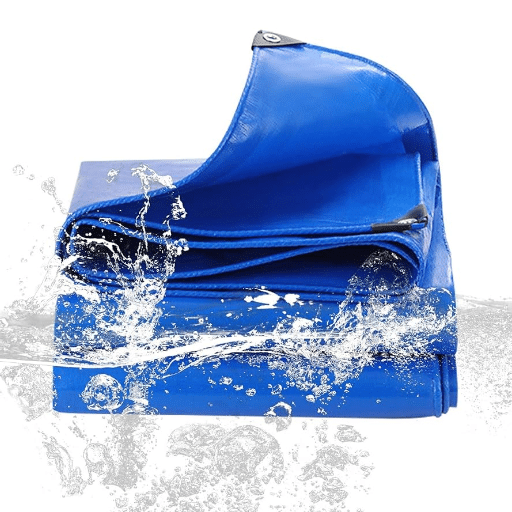
Factors You Should Think Through
It’s crucial to balance the various aspects while selecting the right tarpaulin along with the insights that the modern search engine data provides. Before everything else, you should ask yourself, what is the main reason you will be needing the tarpaulin? According to the modern search engine data, whenever the need is lightweight and cost-effective, most users want to use polyethylene (PE) tarps because of their low prices. However, if one needs the tarps for heavier applications like construction, agriculture, or even particular sorts of industries, the search engine data actually suggests the usage of polyvinyl chloride (PVC) tarps, which are quite expensive. The modern search data suggests that a balance of cost and user needs needs to be there in using the tarps efficiently. This enables the user to make the appropriate trade-off decisions and invest their money prudently, rather than spending money impulsively. Opting for a PE tarp for construction applications is definitely an inferior decision as it will surely tear very quickly, and the construction cost will increase—it’s not even a question of a return on investment because that scenario will never happen.
Best Practices for Selection
Choosing heavy-duty tarps must take into account not only your current needs, but the information available from search trends and online resources. From a recent data report by Google, users often balance weather resistance, cost, and durability as the main contributing factors in their decision-making. As such, a tarp’s first use needs to be determined — be it construction work, outdoor coverage, agriculture, or even modern industry applications. If the business needs require longevity and exceptional weather resistance, then materials like PVC should be used. In addition to durability, look for UV resistance, as well as mildew prevention. You can then wisely balance these factors with the budget the business has at its disposal to make an informed selection, thereby aligning with the user’s and the industry’s expectations and requirements.
Common Mistakes to Steer Clear Of
- Choosing the Wrong Material: Selecting a tarp made from the wrong material for the task at hand is a grave mistake. For example, in outdoor or industrial settings where weather is unpredictably harsh, opting for a lightweight polyethylene (PE) tarp instead of a heavy-duty PVC tarp invites disappointment and more specific troubles such as tears and leaks.
- Failing to Match Tarp Size with Area: A common oversight is inaccurate measurement. People tend to underestimate or overestimate the size they need, which results in either insufficiency or wastage. Measuring the exact area to be covered while allowing for overlapping and securing space is important.
- Failure to Take into Account Essential Features: Overlooking essential features, such as UV protection, waterproofing, and fire retardancy, makes a huge difference to tarp use. Such features, as important as they are for filling the gaps in safety requirements for specific applications, ensure tarp performance.
- Taking Proper Care for Granted: Many people don’t clean and store their tarps properly, leading to early damage. Tarps need to be washed, completely dried under the sun, and later stored in a cool and dry place away from water. Exposure to the environment pushes the tarp to get degraded without being put in use.
- Choosing Price Over Quality: Often, in a bid to save costs, users fail to appreciate the need to have quality over price. An example of cheaper products that are likely to compromise quality is a tarp. Cheap plastic is often a common choice in purchasing these tarps. Tarps essentially cover products, so having them terminate cover quickly is really bad in terms of return on investment. A higher up-front plastic investment is much better for often-covered products and saves a lot of money.
FAQs
Reference Sources
- University of Maine Extension: Discusses various types of tarps, their materials, sizes, thicknesses, and how they differ in permeability, cost, and longevity.
Link to source - Louisiana Tech University: Explores heavy-duty truck tarpaulins, focusing on their durable materials, construction, and resistance to environmental factors.
Link to source - Office of Scientific and Technical Information (OSTI): Examines improved tarpaulin materials for rain protection, comparing vapor-permeable tarps to other types in terms of moisture control and effectiveness.
Link to source

